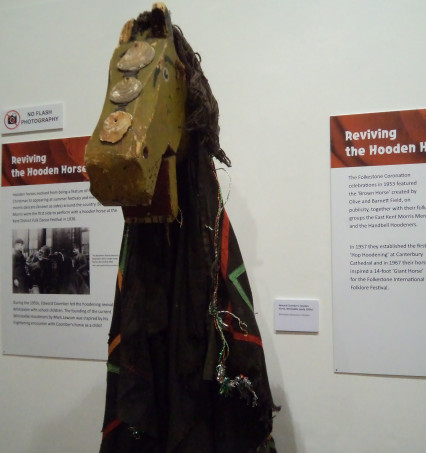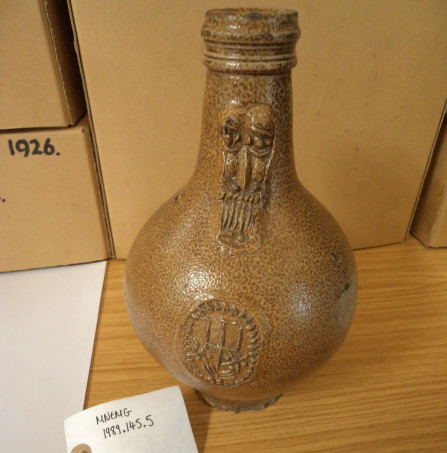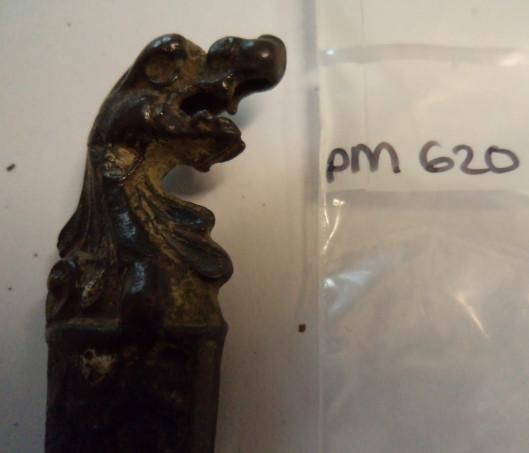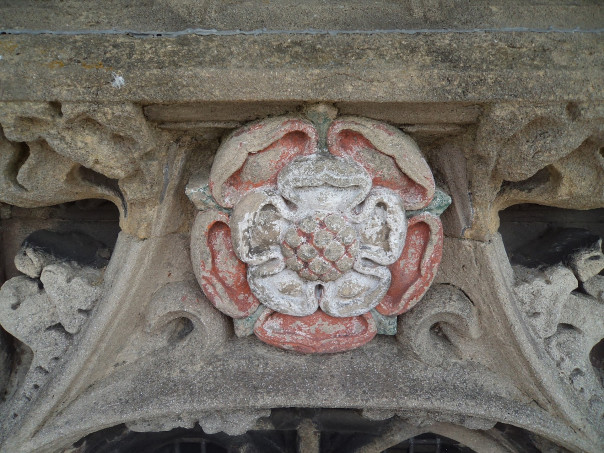As I said last week, I’ll use these two blogs to weave my way through the amazing lectures we have for Tudors & Stuarts 2023 this year. So if you haven’t already looked at the programme for Friday 28 to Sunday 30 April, please do at: https://www.canterbury.ac.uk/tudors-stuarts and we’ll be delighted to welcome you to Canterbury, an exquisite historic city.
For those keen to hear about ‘Kings & Queens’, there is no larger-than-life figure than Henry VIII and Professor Richard Hoyle will explore the first quarter century of his reign and the problems surrounding his lack of a suitable successor. Amy Licence will take us to the next generation of the Tudors to explore the Anglo-Spanish alliance through Queen Mary’s marriage to Philip, her Hapsburg cousin, and their meeting in 1554. Furthermore, our final two lecturers in this strand will explore two women who, although in some ways on the edge of court life, were in other ways not far from the royal centre. Firstly, Professor Jessica Malay will examine the early life of Lady Anne Clifford at the courts of Queen Elizabeth and her Stuart successors, while Professor Maria Hayward will investigate the controversial figure of Nell Gwyn and her life in and out of Charles II’s royal court.

Another on the edge of the royal court was Bishop Bayley of Bangor, and within ‘The Church’ strand, Professor Kenneth Fincham will explore the career of this controversial bishop, thereby providing remarkable insights into the court of James I of heated debates, factional intrigue and a turbulent bishop who was determined to speak truth to power. Keeping with the idea of controversy, certainly religious but never divorced from politics, Dr Rebecca Warren will investigate the sheer proliferation of religious sects that emerged during the short window between the outbreak of civil war in 1642 and the Restoration of Charles II in 1660. Nor were such issues only of importance in the British Isles, and Professor Alec Ryrie, one of the foremost experts on religious and social history in the early modern period, will take us on a voyage of discovery to examine Protestantism in the Americas and beyond.
The exploration of early modern society beyond British shores is similarly taken up by Dr Craig Lambert in the ‘War & Politics’ strand where he will investigate relations between Spain, England and the Atlantic slave trade through the activities of Sir John Hawkins and his associates in the later 16th century. While closer to home, Professor Keith McLay in the same strand will consider the momentous decision Bonnie Prince Charlie took at Derby in 1745 to retreat rather than continue marching towards London, and how this must be seen as a political decision as much as one driven by military considerations.

For those keen on ‘Social History’, the Weekend offers a whole box of delights from those mentioned last week – see Professor Steven Gunn and Drs Elaine Leong, Ben Marsh, Maria Diemling, Oneyka Nubia and Imogen Corrigan, to Professor Catherine Richardson’s exploration on the Friday evening of life in the early modern household, its sights, sounds and smells, and just what levels of light, warmth and comfort did people experience in the 16th and 17th centuries. Additionally, we’ll be investigating what life was like for some in the Tudor almshouse, and how much difference the religious changes had on the way poorer people were viewed and treated by those in authority. Then to 17th-century London and Professor Vanessa Harding’s use of the writings of Richard Smyth to explore what it was like for those living in this vibrant and rapidly expanding city against a backdrop of civil war, plague and a devastating fire.
For those seeking something different, we are offering two tours led by Professor Paul Bennett around the heart of Early Tudor Canterbury, while Cressida Williams of Canterbury Cathedral Archives will similarly twice show groups the early modern treasures in her keeping. Another within the ‘Books & Manuscripts’ strand is Professor Elaine Hobby’s assessment of Aphra Behn, the first professional woman writer in English, who not only had a spectacular career on the Restoration London stage but wrote ground-breaking fiction and poetry, thereby giving us insights into the emotional and sexual world of Stuart England.
Finally in terms of the Weekend, keeping with the importance of books, Craig Dadds of the CCCU Bookshop already has a virtual bookshelf: https://bookshop.canterbury.ac.uk/canterbury-history-weekend-2023 and he will have the usual bookstall in Old Sessions where the lectures will take place.

Another overlapping feature with last week is the importance of material culture and as well as reporting that I had three very interesting days at Maidstone Museum last week while working with the Collections Manager and her colleagues at the museum, I thought I would mention that I took the opportunity to explore Dr Sonia Overall’s ‘Kentish Hooden Horse’ exhibition there (open until 17 June). Consequently, the images this week highlight the exhibition – well worth visiting, and more artefacts from the museum’s collection.
The value of such collections and libraries was apparent as I watched a large group from a local school engage with the various artefacts on show as they explored the museum’s galleries and sought to gain answers and respond creatively – drawing and writing, to what they saw and heard. Of course, not all schools in Kent can or would want to travel as far as Maidstone, which means local libraries and heritage centres have become ever more important for their local community. Hence, it is deeply worrying to hear that Folkestone Library closed a few months ago and it is far from clear when/if it will reopen, so I just thought I would mention that this is the current situation.
Keeping with Folkestone and material culture, in this case relics, for the last part this week I’m going to offer a short report on the ‘Translation: encounters with the sacred in objects and places’ conference held last Saturday at Canterbury Cathedral Lodge. As the concluding event of the ‘Three Days in January’ project, it was fitting that the three presentations in the morning concentrated on the finding of St Eanswythe’s relics and the scientific and conservation work that has been carried out on the surviving bones. Thus, Dr Andrew Richardson (Isle Heritage) provided a summary of what we know about the historical Eanswythe, how the religious community and parish church in Folkestone had developed over the centuries and what had been discovered in the niche in the north wall of the chancel. Dr Ellie Williams, an osteoarchaeologist at Canterbury Christ Church University, then took up the story. As she said, the lead box had been opened in the 1880s when it was reported that the bones were in a “crumbling condition” and they had again been investigated in 1980, making this the third but by far and away the most scientific and thorough assessment, as well as including a significant conservation aspect to the investigation. Ellie’s archaeological team included Lisa Duffy, currently completing the writing up of her doctoral thesis, and while in some ways large sections of the skeleton had not survived, there is a good range of surviving bones and some teeth. This has allowed the team to build up a biography of the person from the bones and among the findings are that this young woman, died between the ages of 18 and 25 years of age, had experienced a fracture of one of her fingers that had healed well before death, was of high status, had enjoyed a diet rich in meat (and fish), and could have lived in south/south-west Kent. Furthermore, Ellie has been delighted to take part in this collaboration and will be involved in the follow-up project, also funded, ‘Eanswythe Found’.

Looking at the conservation side of this project, Dana Goodburn-Brown outlined what she had first seen when she visited the parish church, viewing some tantalising bone fragments through the grill in the north chancel wall. Working with the archaeologists and other team members in the church had been an interesting experience, opening up wide-ranging discussions, not least on how to engage with the skeleton in a respectful way because it is necessary to find a suitable means to slowdown the process of fragmentation. This discussion is still continuing, and, in addition, Dana is delighted that the project is engaging with the public, whether through the work of performance artists or other workshops for varying age groups.
After coffee and ongoing discussions, the next speaker was Professor Julia Smith (All Souls College, Oxford), who opened up the debate by exploring several early medieval European case studies concerning relics and how and why Christianity had invested so much in sacred material culture. Topics within this included the significance of ritual, not only by churchmen but equally the laity, which was (is) seen to include civic authorities, the use of place and space viewed as central to such matters, as well as the deployment of liturgical and theatrical markers to denote special occasions including the saint’s feast day, anniversaries linked to translation and other noteworthy times. Moreover, she explored the value placed on recognition of the sacred by those holding authority – visitations by archbishops and the use of sealing to authenticate the relics, as well as what might be seen as the ‘biography of things’, the dynamic inter-relationship between relics and changing cultural perspectives over the centuries.

This provided even more food for thought, which meant everyone was delighted to view the film and exhibition at lunchtime, as well as enjoy the food provided. It was similarly clear that there were lots of ongoing discussions, and these fed into the afternoon session where first the Revd Dr Lesley Hardy (Three Days in January) and then Bryan Hawkins (Artist in Residence, CAT) explored various aspects around experiencing the sacred using Kentish examples, Richborough Roman fort and the prehistoric Kits Coty respectively.
This nicely set up Professor Timothy Darvill’s (University of Bournmouth) presentation on ‘the power of place’ using Stonehenge as his case study. This engagement between people and places is likely to provoke an emotional response, something that can be heightened through the use of other senses beyond sight and a desire to touch the stones is now met by the popular ‘touch stones’ at Stonehenge that are not actually part of this prehistoric monument. Furthermore, coming from a background of both archaeology and anthropology, he was keen to explore with the audience ideas about how this powerful engagement with the stones can be deployed within therapy programmes, including thinking about how such spaces stimulate specific areas of the brain. Thus, he offered the idea that such material culture can be seen to have agency, and therefore, by definition, the need to examine how and where different cultural systems place humans vis-à-vis the rest of creation.
Although not engaging directly with such ideas, the Rt Revd Dr John Inge’s (Bishop of Worcester) keynote address did explore further the notion of place and how by bring together specific objects, demarcated places and particular times, this physicality had and has the potential to produce a godly geography, a way of coming to the spiritual through the material. Additional aspects include the importance of memory, which, of course, can be personal but equally notions of social/cultural memory, while being associated with communal identity, are equally significant in terms of belief.
As I hope you can envisage, this rich and thought-provoking programme seemed to have inspired members of the audience, and the general buzz around the auditorium demonstrated that Lesley Hardy and her colleagues had done a great job. So, I guess, it is a matter of watch this space for ‘Eanswythe Found’.
 Centre for Kent History and Heritage
Centre for Kent History and Heritage Sheila Sweetinburgh
Sheila Sweetinburgh 766
766


